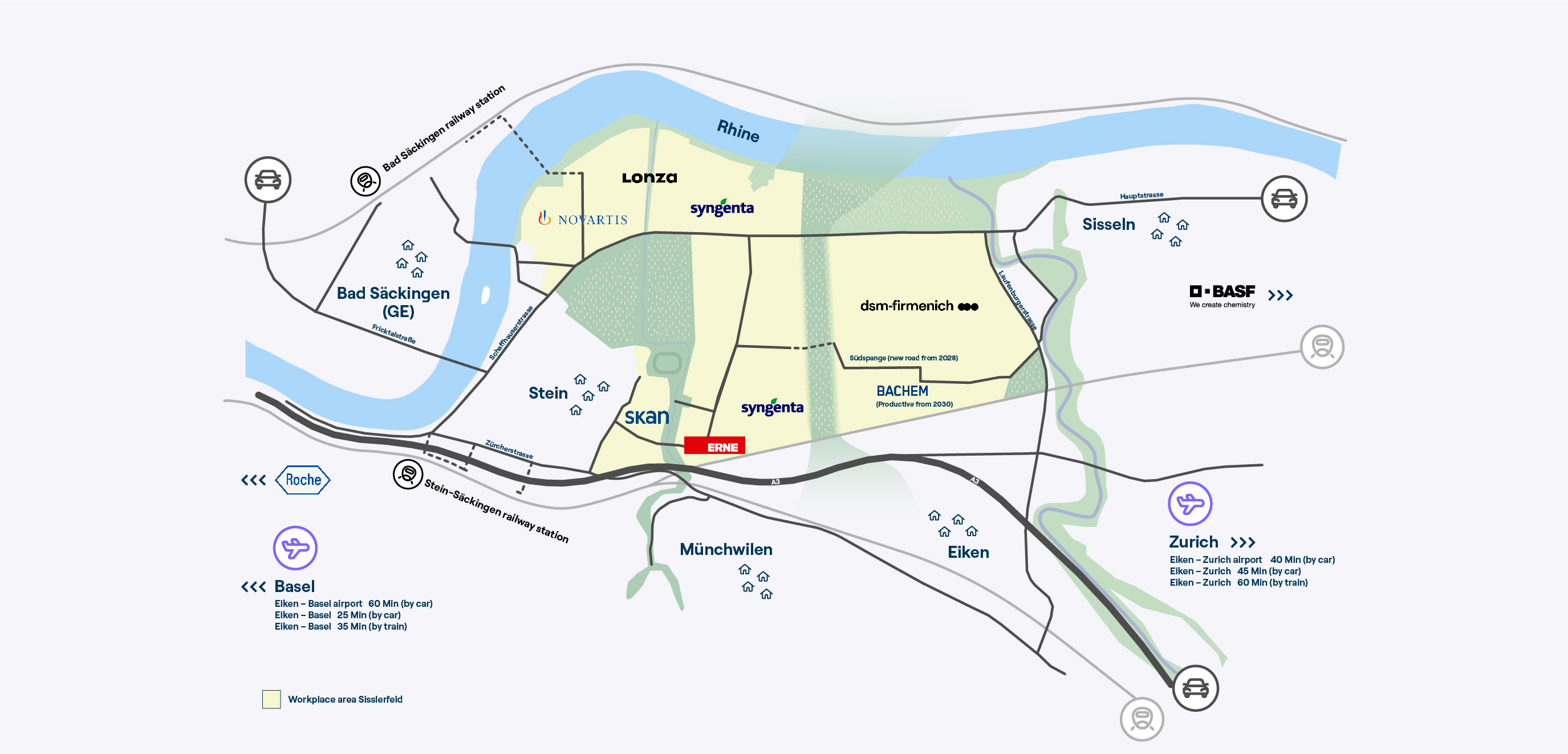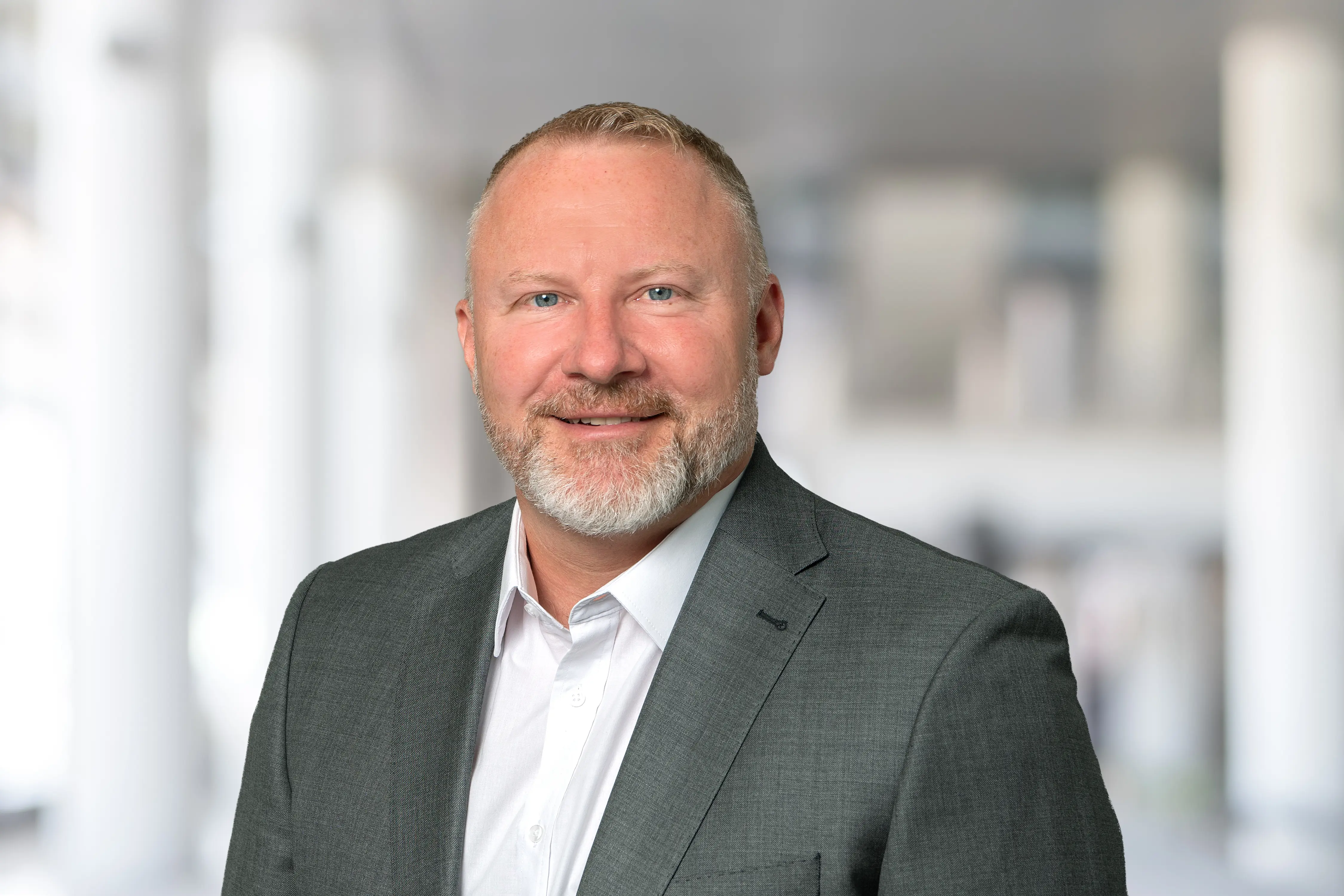
Sisslerfeld
Potential for 10,000 jobs
The Sisslerfeld area in the Fricktal region benefits from its excellent location between Zurich and Basel as well as its global reputation in research and innovative production, particularly in the life sciences sector. Synergies with major local businesses, proximity to Germany and France, and easy access to Basel and Zurich airports are clear benefits.
The well-connected workplace zone is nestled in an attractive environment with local recreation facilities, while jobs are concentrated in areas that are easily accessible by public transport.


BAK Economics study
Attractive jobs and high potential for synergies
The potential for synergies in Sisslerfeld extends far beyond the area. Other well-known life sciences companies and suppliers, such as in the field of medtech, are located right nearby. Other sectors in the region also offer a range of synergies for all stakeholders.
Almost 40,000 employees in Fricktal generate added value of more than CHF 9 billion – around CHF 280,000 per full-time position, one of the highest figures of any region in Switzerland. The life sciences industry is crucial to the high level of value creation in the region.
Sisslerfeld is the heart of the life sciences industry in Aargau and, according to a study by BAK Economics, offers great potential for synergies – not just for the area itself but also for the region.
Spaces in Sisslerfeld
Options for businesses
The Sisslerfeld workplace zone, located in the Fricktal region directly on the Rhine, stretches across the municipalities of Eiken, Münchwilen, Sisseln and Stein and has potential for both medium- and long-term development. The whole area covers 200 hectares, around 85 hectares of which is still undeveloped, with potential for up to 10,000 jobs.
Medium-term usage options
In the medium term, sites will become available in Sisslerfeld that offer optimum access points for employees and freight transport and facilitate transfers between different modes of transport. At the same time, a sustainable energy supply is being developed to satisfy future demand and for shared use by companies. This creates spaces for innovative production, research and services.
Does your business have specific space and infrastructure requirements? Get in touch!
Long-term planning horizon
In the long term, further work zones will be developed and opened up for construction.
Do you have a longer-term planning horizon with your business? Give us a call.
The Sisslerfeld life sciences cluster
New production site for Bachem
In October 2022, the Swiss pharmaceutical supplier Bachem decided to build a new production site in Sisslerfeld in the municipality of Eiken. From the end of the decade, more than 500 highly qualified jobs are set to be created in the life sciences industry there, with long-term potential for up to 3,000 positions. Bachem has chosen Sisslerfeld in order to expand its production capacities and meet the growing market demand for active pharmaceutical ingredients.
The relocation of Bachem marks an important milestone for the sustainable development of Sisslerfeld as an attractive location for business in northwestern Switzerland.

Pioneering work
Sisslerfeld living lab
The Sisslerfeld living lab was founded in 2023 with the aim of making Sisslerfeld a pioneer in sustainable development by researching, testing and refining future-oriented ideas in the fields of energy and mobility under real-life conditions.
The living lab brings together numerous innovative companies and scientific institutions to form an inspiring network.
Integrated Energy Systems Planning – a digital twin for energy flows
This project aims to implement continuous integrated energy planning for the Sisslerfeld area by 2040 and to demonstrate the latest concepts in a digital twin. The focus is on finding a cost-effective solution for achieving net-zero CO2 emissions, taking into account the potential for synergies between different sectors, industries and households.
Project period: 2023–2024
Project lead: EMPA
Drones for Swiss Mobility – traffic flow analysis using drones
The project uses drone videos to measure traffic flows across a larger area than with previous methods. This method can help, for example, to investigate the causes of traffic jams, the use of alternative means of transport (bicycles, scooters, etc.) and utilisation of parking spaces. The results of this analysis will then be used to reduce CO2 emissions and improve road safety.
Project period: 2023–2024
Project lead: EPFL
Vision: net-zero 2040
‘Case studies: Energy Systems and Technology’ is a course on the ‘Energy Science and Technology (MEST)’ Master’s degree programme at ETH Zurich. Over the course of two semesters, five students work on visionary approaches that could be relevant to local companies. For Sisslerfeld, the vision was a CO2-neutral work zone by 2040.
Contact
Planning together
